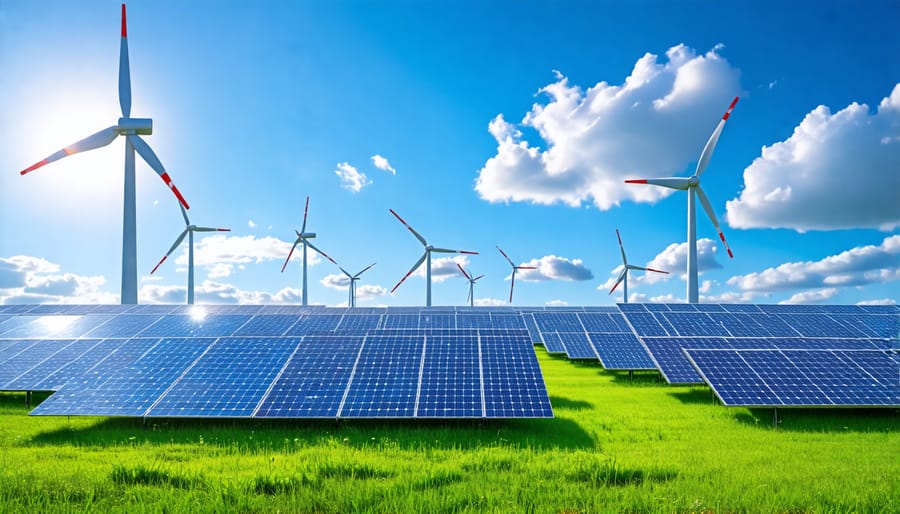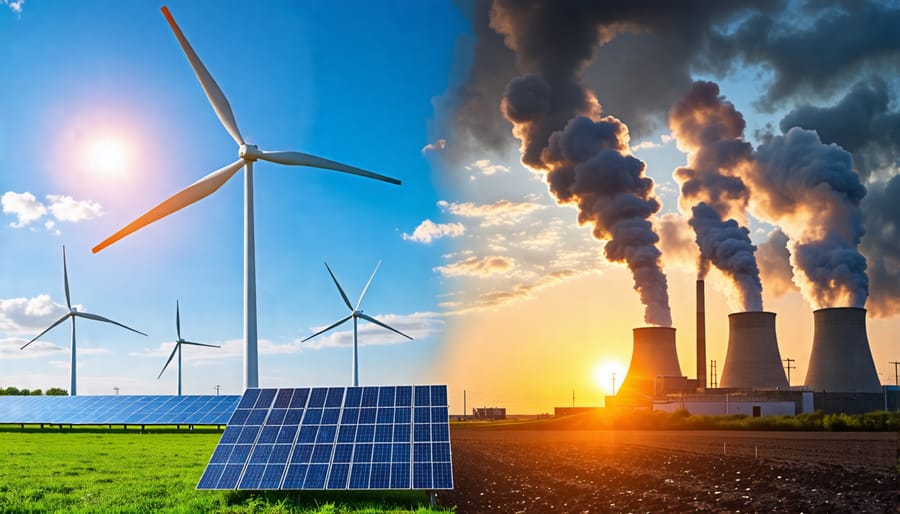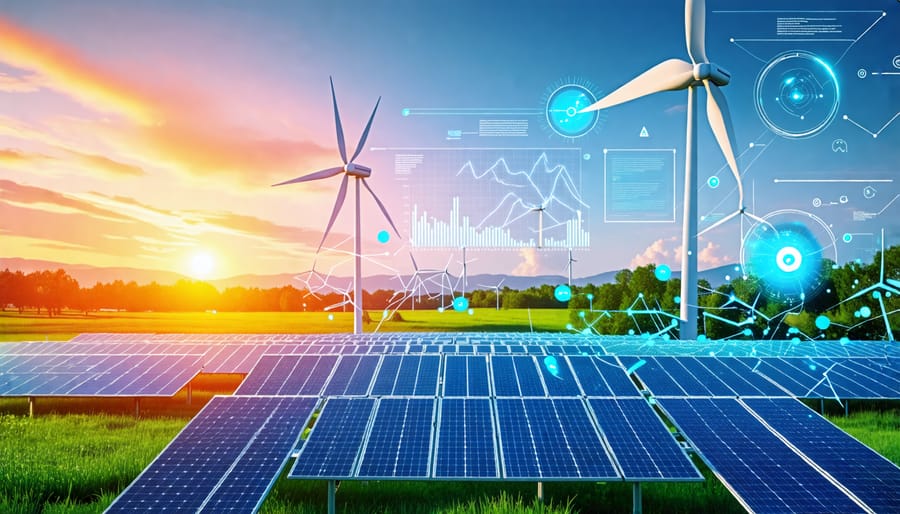Here is a 200-word introduction for an article comparing renewable energy costs to fossil fuels:
The economics of energy are changing rapidly. As the threat of climate change looms larger, renewable energy sources like wind and solar are no longer just an environmentally conscious choice – they are now inarguably the smartest financial choice too.
Recent data shows that the costs of renewable energy have plummeted over the last decade, making them not only competitive with fossil fuels, but often significantly cheaper. According to the International Renewable Energy Agency, the global weighted-average levelized cost of electricity from utility-scale solar PV fell 82% between 2010 and 2019, while onshore and offshore wind costs dropped by 39% and 29% respectively.
In many regions, building new renewable energy plants is now more cost-effective than operating existing coal or gas-fired power stations. And with ongoing technology improvements and economies of scale, the affordability advantage of clean energy will only widen further.
This tipping point has profound implications. It signals that the transition to a low-carbon future is now primarily being propelled by cold, hard economics rather than environmental altruism. For governments, businesses and households, ditching dirty fossil fuels in favor of clean, renewable power is simply the financially prudent choice. The future will be solar-powered – because ultimately, it pays.
The Plummeting Costs of Renewable Energy

Wind Power Cost Trends
Over the past decade, wind power has experienced a remarkable cost reduction, making it one of the most competitive sources of renewable energy. According to the International Renewable Energy Agency (IRENA), the global weighted-average levelized cost of electricity (LCOE) for onshore wind projects fell by 56% between 2010 and 2020. This significant decrease can be attributed to advancements in wind turbine technology, increased efficiency, and economies of scale in manufacturing and installation.
Larger wind turbines with higher hub heights and longer blades have greatly improved the how much energy a wind turbine produces, leading to reduced costs per unit of electricity generated. Additionally, the growing global demand for wind energy has led to increased competition among manufacturers and developers, further driving down costs. As a result, onshore wind power is now one of the most cost-competitive sources of new-build electricity generation, with costs ranging from $0.053/kWh to $0.042/kWh in some regions.
Offshore wind power, while still more expensive than onshore, has also experienced significant cost reductions. The LCOE for offshore wind decreased by 48% between 2010 and 2020, with further cost reductions expected as the industry continues to mature and adopt innovative technologies. As wind power costs continue to decline, it is becoming an increasingly attractive option for countries seeking to transition to clean, affordable, and sustainable energy sources.
Solar Power Cost Trends
Over the past decade, solar photovoltaic (PV) technology has experienced a remarkable decline in costs. According to the International Renewable Energy Agency (IRENA), the global weighted-average levelized cost of electricity (LCOE) for utility-scale solar PV projects fell by 85% between 2010 and 2020. This dramatic reduction can be attributed to advancements in technology, economies of scale, and increased competition in the solar industry.
As of 2020, the LCOE of utility-scale solar PV has reached $0.057/kWh, making it one of the most cost-competitive energy sources worldwide. In many regions, solar PV is now cheaper than new coal or gas-fired power plants. This cost reduction has been a key driver in the rapid growth of solar energy adoption globally.
Looking ahead, the cost of solar PV is expected to continue declining, albeit at a slower rate. IRENA projects that by 2030, the LCOE of utility-scale solar PV could decrease by an additional 50-60%, reaching $0.02-$0.03/kWh. This ongoing cost reduction, coupled with supportive policies and increasing environmental awareness, is likely to further accelerate the deployment of solar energy as a clean, affordable, and sustainable power source in the coming years.
Fossil Fuel Cost Fluctuations
The costs of fossil fuels such as oil, gas, and coal have long been subject to significant fluctuations due to a variety of factors. Geopolitical events, such as conflicts in major oil-producing regions, can quickly disrupt supply and send prices soaring. For example, the oil price shocks of the 1970s were triggered by the Yom Kippur War and the Iranian Revolution, leading to a quadrupling of crude prices. More recently, the Russian invasion of Ukraine in 2022 caused major turmoil in global energy markets, especially in Europe, which relied heavily on Russian gas.
In contrast, renewable energy sources like solar and wind are not subject to the same geopolitical risks and price volatility. Once a solar or wind farm is built, the “fuel” is free and inexhaustible. While there are upfront capital costs, the operating costs are stable and predictable over the 25+ year lifespan of the project. This price stability is a major advantage of renewables compared to the boom-and-bust cycles of fossil fuel markets.
Moreover, as renewable technology continues to improve and economies of scale kick in, the costs of solar and wind power keep falling. Lazard’s Levelized Cost of Energy Analysis shows that unsubsidized wind and utility-scale solar are now cheaper than gas, coal, or nuclear power in many regions – without any fuel price risk. As battery storage technology also becomes cheaper, renewables + storage are poised to outcompete fossil fuels on cost and reliability across the board. The stable, falling costs of clean energy are a powerful economic argument for accelerating the renewable transition.

Levelized Cost of Energy Comparison
The Levelized Cost of Energy (LCOE) is a key metric used to compare the lifetime costs of different energy generation technologies. It calculates the average total cost to build and operate a power-generating asset per unit of total electricity generated, providing a helpful apples-to-apples comparison.
Recent LCOE analyses have revealed a stunning trend: in many regions worldwide, renewable energy sources like solar and wind are now cheaper than traditional fossil fuels. According to a 2020 report by the International Renewable Energy Agency (IRENA), over half of the renewable capacity added that year achieved lower electricity costs than the cheapest new coal plants.
Utility-scale solar PV has seen the most dramatic cost reductions, with the global weighted-average LCOE falling 82% between 2010 and 2019. Onshore and offshore wind have also made huge strides, with their costs plummeting 39% and 29% respectively over the same period. In contrast, the costs of electricity from fossil fuel-fired power plants have remained largely stagnant.
These shifting economics have led to some astonishing regional milestones. In the United States, the estimated LCOE of unsubsidized wind and solar is now lower than coal and combined-cycle gas turbines in many states. Similar trends can be observed in Europe, China, India, and Australia, where renewables are routinely outcompeting fossil fuels on cost.
Of course, LCOE doesn’t tell the whole story – factors like intermittency, dispatch characteristics, and transmission costs also matter. But it’s an encouraging sign that the raw economics are now firmly on the side of renewables in a growing number of markets. As innovation continues to drive down costs and improve performance, the case for renewable energy as the most affordable option will only strengthen in the years ahead.
The implications are profound. For decades, the high upfront costs of renewables were seen as a barrier to widespread adoption. Now, with costs falling below fossil fuels, a future powered by clean energy looks not only possible, but economically inevitable. The transition will still take time, but the economic foundations are now firmly in place. The era of renewables has arrived.
Implications for the Energy Transition
The rapidly falling costs of renewable energy sources like solar and wind power are accelerating the global transition away from fossil fuels. As renewables become more affordable than coal, oil, and natural gas in many markets, the economic case for clean energy grows stronger by the day. This cost advantage is expected to continue widening over the coming years, driving increased investment and adoption of renewable technologies.
The shift towards renewables is not just an environmental imperative, but an economic one. Countries and companies that embrace this transition early will be well-positioned to thrive in the clean energy economy of the future. We can expect to see a significant reshaping of the global energy mix, with renewables taking center stage and fossil fuels gradually phasing out.
However, the intermittent nature of solar and wind power presents a challenge. This is where the importance of energy storage comes into play. As battery costs continue to plummet, storing renewable energy for use on demand becomes increasingly viable. This will enable a more flexible and reliable clean energy grid.
Exciting technological advancements are also on the horizon, such as the future of wind energy with larger, more efficient turbines. As innovation drives down costs and improves performance, the renewable revolution will only accelerate. The future is bright for clean, affordable, and sustainable energy that benefits both people and planet.
Conclusion
The falling costs of renewable energy technologies, coupled with the increasing economic and environmental costs of fossil fuels, are driving a global shift towards clean energy. As solar, wind, and other renewables become cost-competitive or even cheaper than traditional energy sources, the economic case for transitioning to a low-carbon future grows stronger. Governments, businesses, and individuals are recognizing the immense potential of renewables to provide affordable, reliable, and sustainable energy solutions. While challenges remain, the rapid advancements in technology and the growing investment in clean energy infrastructure are paving the way for a greener, more prosperous future powered by renewable energy.





